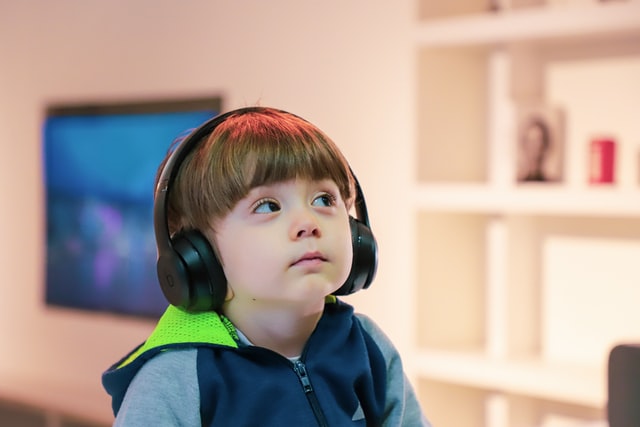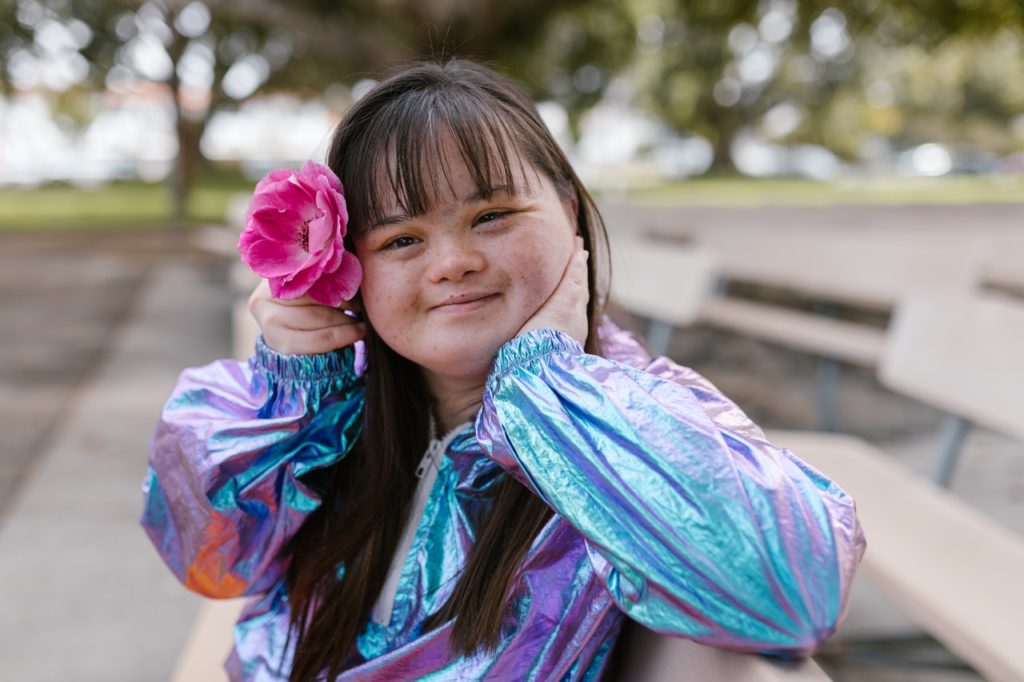Table of Contents
This guide on how to teach students with autism spectrum disorders will give strategies for teaching students with autism, but it is important to note that all students with or without learning difficulties are unique and strategies that work for one will not necessarily work for all. It is important to develop a rapport with students in order to know how best to work with the student.
While each student is unique, there are still approaches on how to teach students with autism that can actually be tried with any student, but may have specific benefits for students with autism spectrum disorders. But before discussing strategies, it is important to have a clear understanding of what autism is.
What is Autism?
The National Institute of Mental Health defines Autism Spectrum Disorder (ASD) as “a developmental disorder that affects communication and behavior.” (“NIMH » Autism Spectrum Disorder”) As the name suggests, autism is not really a single condition, but a broad array of behavioral traits.
Individuals with autism may have one or many of the behaviors or propensities at varying levels. People with ASDs often report a dislike for some strong sensory stimuli like loud noises, crowds or touching. They also often have trouble socializing and sometimes this is due to a difficulty understanding the emotions of others.
A person with ASD can have such a broad variety of traits such that a common example is a person with ASD can either be nonverbal and unable to communicate in traditional ways, or be labeled as a savant who is capable of learning multiple languages extremely quickly. Languages aren’t the only things people with ASD can excel at however.
There are also many people with ASD who have savant-like skills in music, art, and mathematics among other subjects. Over time, as ASD and its many definitions get more study and research, this condition will be subdivided or given various subtypes. This is a process that has already started as Asperger’s is considered by some a type of Autism while more and more mental health professionals are considering it separate.
Identifying ASDs in the Classroom

Students who are diagnosed with Autism Spectrum Disorders are sometimes described by their teachers as…
- Reserved and quiet.
- Not always aware of the emotional impact of what they say to others.
- Obsessed with certain ideas, objects, or behaviors.
- Doing their best in structured environments with little change.
How to Teach Students with Autism Spectrum Disorders?
1: Have a schedule and let them have it too.
Students on the autism spectrum often have difficulty in dealing with changes in their environment and routine. (Hodgson et al.) Teachers should provide students with clear written schedules so that the student knows what to expect and can mentally plan ahead. This can remove a source of stress and help keep the student on a regular path to improvement.
Because of their partiality to routine, students on the Autism spectrum can harness that to plan out regular study sessions for each class and have a set study schedule for each session. Since regular organized practice is so important for learning this can be a boon for such students.
2: Let students with autism know about changes or new things as soon as possible.
The preference for routine isn’t always a benefit to students with ASD however. When inevitable changes do occur, they can be a source of frustration and anxiety for the student. Teachers should be mindful of this and try to let the student know of any changes as soon as possible.
Teachers should also help the student develop strategies for dealing with changes to their routine such as creating routines around schedule changes themselves. Having students keep an organized calendar and update it as soon as they hear of changes will help them develop a useful skill for adulthood.
3: Group them with a friend when stressed.
Since people with autism often have a different way of interacting socially, they can become more easily ostracized. Students on the Autism spectrum are often very aware that the way that they think and act is significantly different from those around them, and this can create social anxiety, which commonly co-occurs with ASD. (Spain et al.) If the teacher notices that the student is having a bad day or is getting stressed, they can try to group them with someone they are friends with.
Being with a friend allows the student to not have to worry so much about their social interactions and let them focus on learning. While students on the Autism spectrum need to learn to work with all types of students, giving them a break in their tough times can prevent burn out and help create a nurturing and supportive feeling environment for the student.
4: Teach students with autism perspective taking.
One of the ways teachers can help create a nurturing environment is by helping students with autism to mindfully consider other perspectives. Asking questions like “How would you feel if someone did that to you?” or “How do you think they are feeling right now?” or “ Why do you think they did that?” will help them to be more mindful of how others perceive things and that they should consider the way they speak to others.
Teachers should not only guide the student through the logic of the emotions they should also help them to understand that some things in life don’t always make sense, and that’s ok. Students with autism spectrum disorder may struggle to make sense of the logic of others, but that does not mean they are incapable of being kind and understanding with patience, mindful guidance, and time.
5: Don’t treat them any differently.
As said above, people with ASDs are often acutely aware that they may act differently from those around them and often spend a lot of mental energy trying to act more similarly to their peers. Singling them out or giving them special treatment, even when done with the best of intent, may be a source of stress and embarrassment for the student. It is important to discuss any changes or alterations to their coursework with them in private.
This advice may seem contrary to the tips above, but learning to organize a schedule, consider other perspectives and be mindful of how one speaks to others are really skills that all students need to work on. Students with autism will simply need more assistance in this area of development than other students might.
Teachers should strive to utilize organizational strategies and be up front about changes with all students. Unexpected change can be difficult for anyone. Rather than trying to completely eliminate any possible source of stress for students with autism, teachers should focus on developing skills to help them learn to cope with change and manage their emotions.
Parents and teachers should not attempt to remove all challenges for students with autism, despite this perhaps seeming kind and certainly being easier in the short term. Students with specific challenges need more time, support, and guidance in their areas of weakness not less. If they are to develop strategies to eventually become independent in the unpredictable real world, they need to be given the chance to overcome challenges and deal with everything not always going as planned.
Research shows that people with mental health challenges such as ASD are significantly more likely to develop Substance Use Disorders and represent a significantly higher percentage of the homeless population in the United States. (Stone et al.) (Cremers) Students that are not taught healthy ways to deal with their emotions and handle unexpected changes may end up using unhealthy coping mechanisms including alcohol and drugs.
Conclusion
Working to help students develop strategies and deal with challenges while they are still in a safe and supported environment is extremely important. Trying to create an ideal world for them in school by separating them from their peers and removing all possible frustrations will set them up to not have any coping mechanisms in the future when they attempt to find their place in the world.
Instead, teachers need to ensure that students with autism know that they are loved and supported, but also that they need to grow, learn, and deal with lives challenges just like any other student. Students with autism are fully capable of improving themselves despite their challenges. Just like any other student, they will have their own personal areas of strength and weakness. It is a teachers job to help them utilize their strengths and help them develop ways to bolster their weaknesses so that they can have happy, successful lives after graduation.
Disclaimer
This guide on how to teach students with autism spectrum disorders is designed with the principles of Universal Design, which says that lessons can be built in a way that works for the brains of all students. As a disclaimer, however, none of the information in this guide can supersede the personal relationship and rapport built over the months between teacher and student.
Students with learning difficulties are not all alike and not all strategies will work for all students, so teachers should continue their good practice of getting to know the needs, strengths and weaknesses of each of their students with or without a diagnosed learning difficulty. These tips are based on the fundamentals of how the human brain works, however, and so many students will respond well to these suggestions, perhaps helping students with and without a learning difficulty.
Want more like this? Make Lab to Class a part of your weekly professional development schedule by subscribing to updates below.
References
Cremers, Patricia JM van Wijngaarden. “Addiction And Autism: A Remarkable Comorbidity?”. Journal Of Alcoholism &Amp; Drug Dependence, vol 02, no. 04, 2014. OMICS Publishing Group, https://doi.org/10.4172/2329-6488.1000170.
Hodgson, Anna R. et al. “Facing The Unknown: Intolerance Of Uncertainty In Children With Autism Spectrum Disorder”. Journal Of Applied Research In Intellectual Disabilities, vol 30, no. 2, 2016, pp. 336-344. Wiley, doi:10.1111/jar.12245.
“NIMH » Autism Spectrum Disorder”. Nimh.Nih.Gov, 2021, https://www.nimh.nih.gov/health/topics/autism-spectrum-disorders-asd.
Spain, Debbie et al. “Social Anxiety In Autism Spectrum Disorder: A Systematic Review”. Research In Autism Spectrum Disorders, vol 52, 2018, pp. 51-68. Elsevier BV, doi:10.1016/j.rasd.2018.04.007.
Stone, Beth et al. “The Autistic Experience Of Homelessness: Implications From A Narrative Enquiry”. Autism, 2022, p. 136236132211050. SAGE Publications, https://doi.org/10.1177/13623613221105091.




